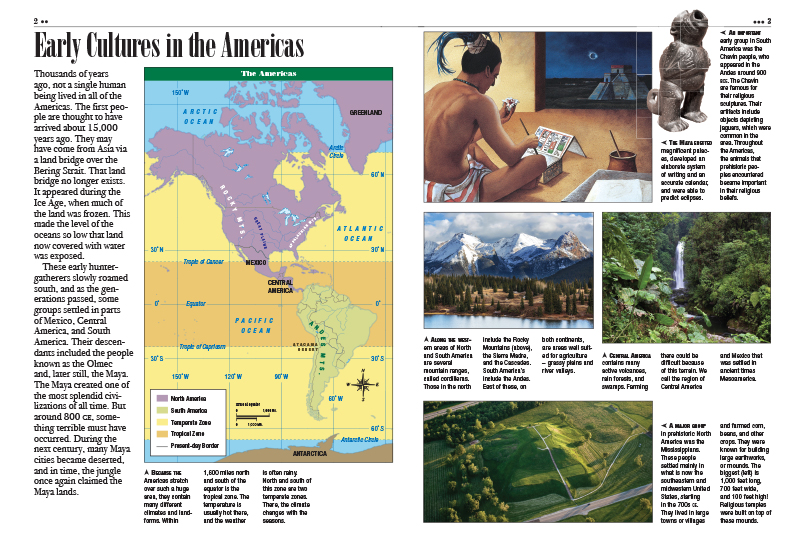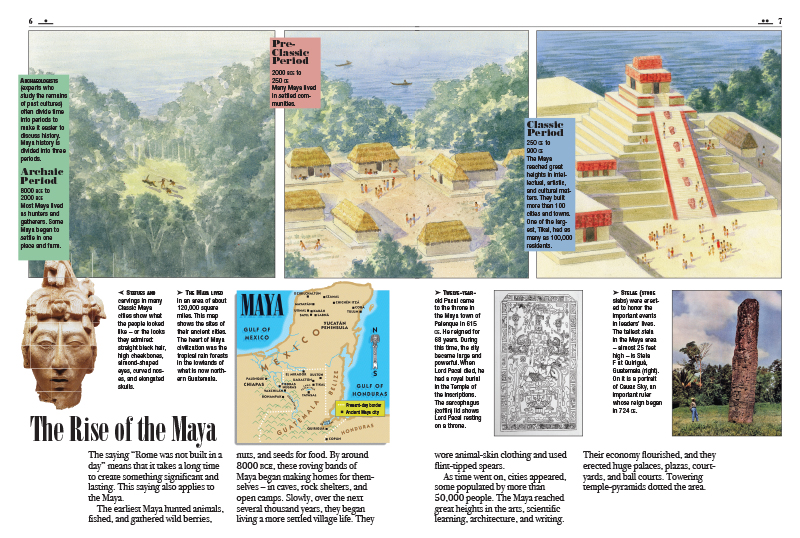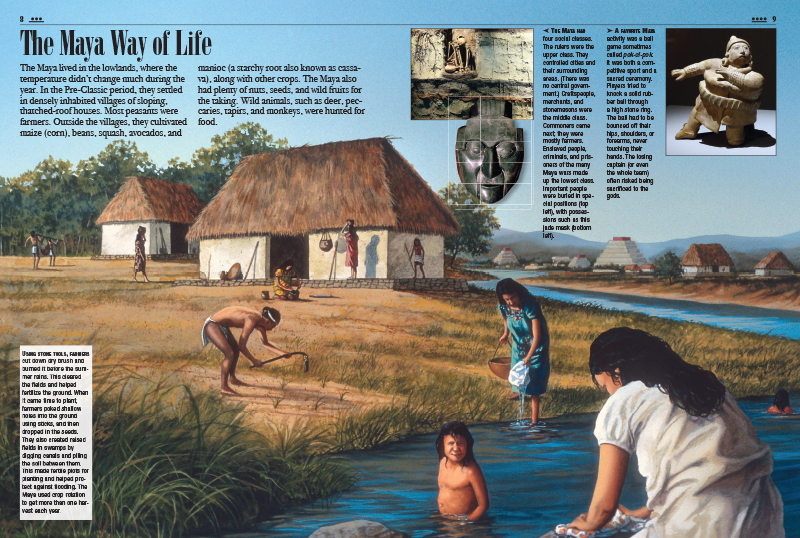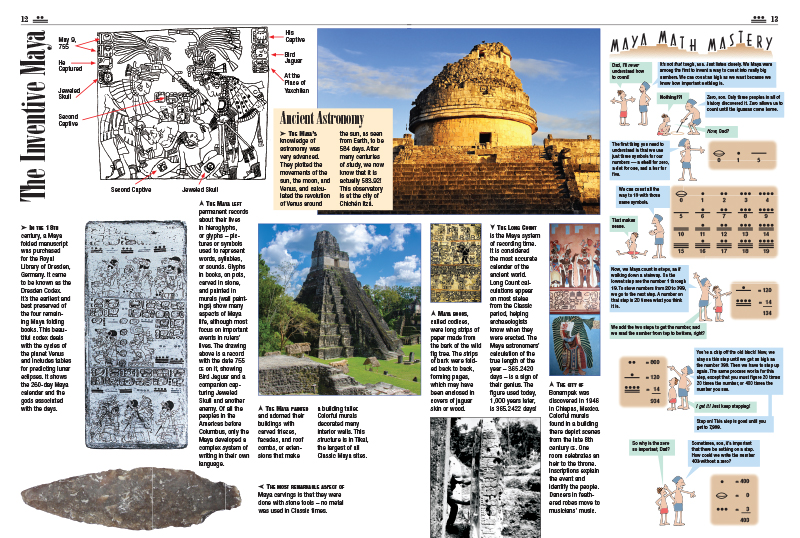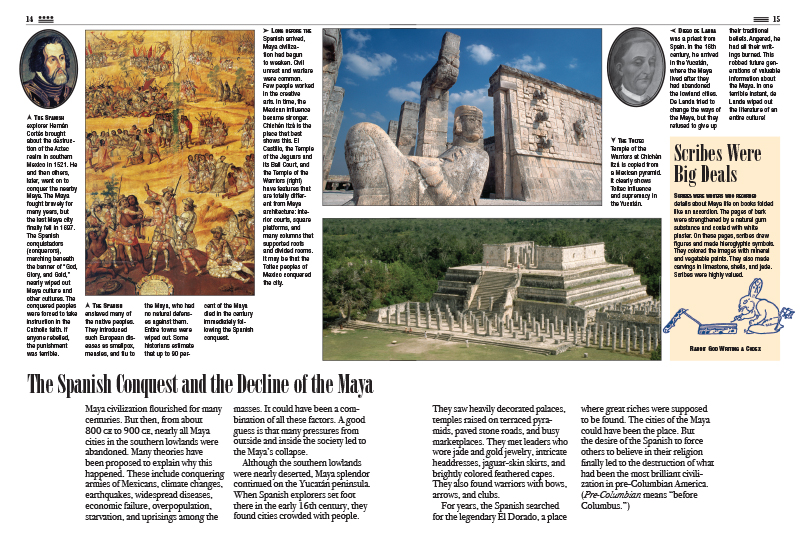Get digital access to this title and hundreds more with a Kids Discover Online subscription.
Get digital access to this title and hundreds more with a Kids Discover Online subscription.
Olmec and Maya
One of the greatest mysteries of ancient history is what caused most of Maya civilization – best known for its magnificent palaces and uncannily accurate calendar – to come to an abrupt end in A.D. 800 after centuries of splendor. In this issue, Olmec and Maya, kids will explore this highly advanced culture, perhaps coming up with their own theories about what befell it. They’ll learn about the Mayas’ incredible grasp of math and astronomy, which they used to predict eclipses and even calculate the length of Venus’ orbit around the Sun. The daily life of most rural Maya, for kids, is also detailed: Life for peasants was simple but productive – most were farmers who lived in family groupings – while nobles and the wealthy draped themselves in gold jewelry and lived in bustling cities.
But over time, this sophisticated civilization began to decline due to civil unrest, and although they put up a good fight when they encountered Spanish conquistador Hernán Cortés in the 16th century, by the 1800s, the Maya empire was no more. Their culture, however, lives on in the six million modern Maya alive today, who live in rural parts of Mexico, Guatemala, and Belize, and who produce traditional arts and perform many of the age-old rituals. For kids interested in archaeology, a sidebar about the incredible talents of David Stuart, kid cryptographer, will have them eager to find their own lost empire to discover.

